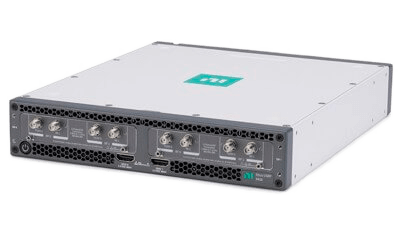5G Wireless and Communications Research
Cellular technology evolves quickly—5G rollouts
Wideband 5G devices testing requires accurate, fast, and cost-effective test solutions to ensure the reliability. For 5G test, there are several challenges to address::
- Waveforms are wider and more complex, as 5G New Radio includes two different types of waveforms: Cyclic-prefix OFDM (CP-OFDM) for downlink and uplink and Discrete Fourier transform spread OFDM (DFT-S-OFDM) for uplink only; this waveform resembles LTE’s single-carrier frequency division multiple access (SC-FDMA).
- Instruments must be wideband and linear, and they must cost-effectively cover an extensive frequency range, so there’s a need for instrumentation that not only supports coexistence with current standards but also adapts to the evolution of the standard over time.
- Over-the-air testing of Massive MIMO and beamforming systems makes traditional measurements spatially dependent, so need for OTA test techniques that synchronize fast and precise motion control and RF measurements to more accurately characterize 5G beamforming systems.
Only a combination of high-performance hardware such as PXI and a powerful software tool can address these challenges.

Additionally, industry and academic researchers are already defining 6G together with technologies such as artificial intelligence, machine learning, MIMO and RADAR sensing. This requires to quickly move from mathematical models to over-the-air testbeds to evaluate how new technologies will perform under realistic conditions.
We are an authorized distributor of NI technologies for 5G Design Validation, which features NI’s measurement-oriented software to control multichannel DC, digital, analog, and wideband RF test instruments to simplify both interactive and automated 5G design validation sequences and to rapidly prototype and deploy real-time wireless communications systems.
Some of our featured solutions
- 5G mmWave OTA Validation
- Wireless Standards Validation
- Vector Signal Transceiver for 5G
- AI Research for 5G Networks
- Research and Prototype 5G mmWave, 6G Sub-THz Systems
- USRP Software-Defined Radio to design, prototype, and deploy wireless systems with custom signal processing
Product focus: Software-defined Radios

In markets such as signals intelligence (SIGINT), electronic warfare, test and measurement, spectrum monitoring, and military communications (MILCOM), Software Defined Radios have become the de facto industry standard. Software defined radios are wireless devices commonly used for wireless research prototyping and deployed applications. SDRs are commonly used for communications, next gen radar, EW, over-the-air (OTA) test, and 5G research. Most SDRs have a common hardware architecture including general purpose processors (GPPs), FPGAs, and RF front ends of varying performance.
Paired with your choice of software toolchain, a software defined radio has the capability and flexibility to meet your needs. To figure out which SDR hardware to use, see this guide or call us for a customize assessment of your application needs.
